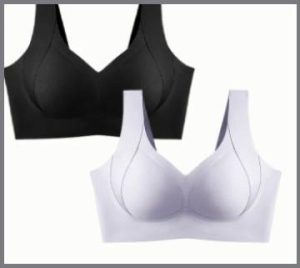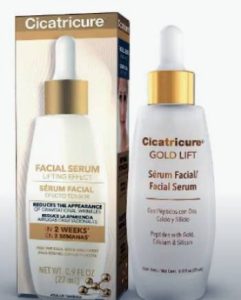I’ve been on a hair care journey for years, battling frizz, dullness, and the occasional hair fall scare. When I stumbled across Dabur Amla Hair Oil, I was skeptical but intrigued. Its promise of stronger, shinier, and healthier hair hooked me. If you’re tired of lackluster locks or want a natural solution to boost your hair game, this oil is worth a shot. Packed with the goodness of Indian gooseberry, it’s a budget-friendly gem that delivers. Trust me, you’ll want to add this to your routine—your hair will thank you!
My Experience with Dabur Amla Hair Oil
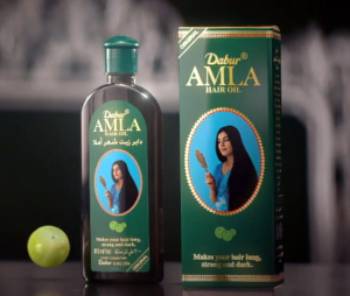
Let me take you back to when I first tried Dabur Amla Hair Oil. I was in a rut—my hair felt dry, looked dull, and I was noticing more strands in my brush than I’d like. I’d heard about amla’s benefits for hair, so I grabbed a bottle from a local store, drawn by its vibrant green hue and Dabur’s reputation. The first thing I noticed was the scent—herbal, strong, and not exactly my cup of tea. But I wasn’t here for aromatherapy; I wanted results.
I warmed a small amount using a double boiler (pro tip: it enhances absorption) and massaged it into my scalp and strands. The oil felt light, not greasy, and spread easily. I left it on for an hour, though sometimes I’d let it sit overnight for deeper nourishment. After shampooing, my hair felt softer, almost like it had been conditioned already. Over a few weeks, I noticed a difference—my hair looked shinier, felt smoother, and seemed less prone to breakage. The frizz? Tamed. Hair fall? Reduced. It wasn’t an overnight miracle, but the gradual improvement kept me hooked.
What stood out was how my scalp felt healthier. I used to deal with occasional itchiness, but the oil’s nourishing properties seemed to calm things down. I also loved that it didn’t weigh my hair down or leave a sticky residue. I even experimented by mixing it with a bit of lavender oil to soften the herbal scent, which worked like a charm. This oil became a staple in my routine, and I’m excited to share why it might work for you too.
The Power of Amla in Hair Care
Amla, or Indian gooseberry, is the star of Dabur’s formula. This fruit is a powerhouse, loaded with Vitamin C and E, antioxidants, and nutrients that support scalp health and hair strength. It’s been a staple in Ayurvedic hair care for centuries, known for nourishing hair from root to tip. Dabur’s oil blends pure amla extract with vegetable oils, creating a lightweight formula that penetrates deeply without feeling heavy. It’s designed to tackle frizz, boost shine, and promote stronger, healthier hair. The brand’s commitment to natural ingredients and quality makes it a standout in a crowded market.
Maintenance Tips for Using Dabur Amla Hair Oil
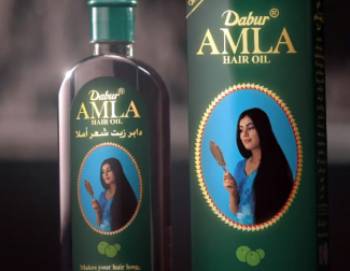
- Warm It Up for Better Absorption
Before applying, warm the oil slightly using a double boiler or by placing the bottle in hot water. This helps it penetrate your scalp and hair more effectively. I do this every time, and it makes a noticeable difference in how soft and nourished my hair feels. Just don’t overheat—lukewarm is perfect.
- Use the Right Amount
Less is more with this oil. Stick to about 5-10ml, depending on your hair length. Too much can lead to buildup, especially with the mineral oil. I pour a coin-sized amount into my palm, rub it between my hands, and massage it in. This keeps things light and effective.
- Massage for Scalp Health
Spend a few minutes massaging the oil into your scalp. It boosts circulation, which supports hair growth and reduces tension. I use gentle circular motions, focusing on areas prone to dryness or thinning. It’s relaxing and makes the oil work harder for you.
- Leave It On Strategically
For quick results, leave the oil on for an hour before shampooing. For deeper nourishment, try overnight application once a week. I wrap my hair in a towel or use a shower cap to avoid mess. Overnight treatments left my hair noticeably softer and stronger over time.
- Shampoo Thoroughly
Use a good shampoo, like one from Dabur’s Vatika range, to wash out the oil completely. I shampoo twice if I’ve left it on overnight to avoid residue. Follow with a conditioner to lock in moisture. This ensures your hair stays clean and doesn’t feel weighed down.
- Consistency Key
Apply the oil Is 2-3 times a week for best results. I noticed significant improvements in shine and hair fall after a month of regular use. Skipping weeks can slow progress, so make it a habit. Pair it with a healthy diet and hydration for even better outcomes.
Pros and Cons of Dabur Amla Hair Oil
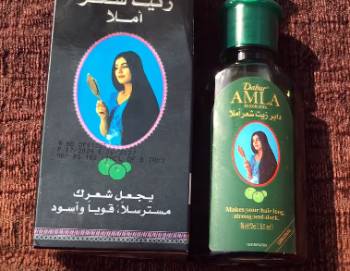
Pros:
- Nourishes and Strengthens Hair: This oil works wonders for strengthening hair. The amla extract, rich in Vitamin C, feeds your scalp and hair follicles, making strands less prone to breakage. After a month of using it twice a week, my hair felt more resilient and looked healthier.
- Enhances Shine and Smoothness: If dull hair is your nemesis, this oil is your ally. It smooths frizz and adds a natural sheen that lasts even after washing. My hair went from lackluster to glossy, and I got compliments on how vibrant it looked.
- Reduces Hair Fall: While it’s not a cure-all, I noticed less hair fall after consistent use. The oil’s nutrients strengthen roots, which helps minimize shedding. It’s not magic, but it’s a solid step toward healthier hair.
- Budget-Friendly: At its price point, Dabur Amla Hair Oil is a steal. You get a high-quality, natural product without breaking the bank. A little goes a long way, so one bottle lasts ages.
- Easy to Use: The lightweight texture makes application a breeze. It absorbs well, doesn’t feel greasy, and washes out easily with one shampoo. Even if you’re new to hair oils, this one’s user-friendly.
Cons:
- Strong Herbal Scent: The smell is a dealbreaker for some. It’s distinctly herbal and can linger, especially if you don’t shampoo thoroughly. I got used to it, but if you’re sensitive to strong fragrances, you might need to mix it with another oil or use it sparingly.
- Contains Mineral Oil: One downside is the inclusion of mineral oil, which some folks avoid. While it acts as an emollient, coating hair to lock in moisture, it doesn’t nourish like plant-based oils. For me, this wasn’t a huge issue, but if you’re strictly into all-natural products, it’s worth noting.
- Not Ideal for Light-Colored HairThe oil’s green tint can be risky for blonde or bleached hair. There’s a chance it could leave a slight hue, so if you’ve got light locks, do a patch test first.
- Results Take Time: Don’t expect overnight miracles. While I saw improvements in shine and texture within weeks, significant changes like reduced hair fall or growth took longer. Patience is key.
- Potential Buildup with Overuse: Using too much or not washing it out properly can lead to buildup, especially because of the mineral oil. I learned to stick to the recommended amount (up to 10ml) to avoid this.
Also Read: My Thoughts On Olivia Care Rosemary Hair Oil
Dabur Amla Hair Oil Vs. Other Hair Oil Brands
- Dabur Amla Hair Oil Vs. Parachute Advansed Jasmine Hair Oil
Parachute Advansed Jasmine Hair Oil is a popular choice for its pleasant jasmine fragrance and lightweight feel. It’s coconut oil-based, which deeply nourishes and adds shine, making it great for dry hair. However, it lacks the nutrient density of amla, so it doesn’t target hair strength or scalp health as effectively. I found Parachute less versatile—it’s better for quick hydration than long-term hair repair. Dabur’s focus on amla gives it an edge for strengthening and reducing hair fall, but Parachute wins if you prioritize scent and immediate softness.
- Dabur Amla Hair Oil Vs. Bajaj Almond Drops Hair Oil
Bajaj Almond Drops Hair Oil is known for its almond oil base, rich in Vitamin E, which promotes scalp health and shine. It’s non-sticky and has a mild, nutty scent that’s easier on the nose than Dabur’s herbal aroma. While Bajaj is excellent for daily use and detangling, it doesn’t pack the same punch for hair growth or strength as amla. I’d choose Bajaj for maintenance but Dabur for intensive care. If you want a lighter oil for everyday styling, Bajaj might suit you better.
- Dabur Amla Hair Oil Vs. Kama Ayurveda Bringadi Intensive Hair Treatment
Kama Ayurveda’s Bringadi oil is a premium Ayurvedic blend with amla, bhringraj, and sesame oil, targeting hair growth and scalp health. Its natural ingredients and subtle herbal scent feel luxurious, but the price is steep. Compared to Dabur, Kama offers a more holistic treatment but requires a bigger investment. I found Dabur’s results comparable for shine and strength, though Kama might edge out for dandruff control. If budget isn’t a concern and you want a spa-like experience, Kama’s worth it; otherwise, Dabur delivers similar benefits.
- Dabur Amla Hair Oil Vs. Vatika Enriched Coconut Hair Oil
Vatika Enriched Coconut Hair Oil combines coconut oil with herbs like amla and brahmi, aiming for nourishment and growth. Its thicker texture suits overnight treatments, but it can feel heavier than Dabur’s lightweight formula. Vatika’s scent is milder, which I appreciated, but it didn’t reduce hair fall as noticeably. Dabur’s amla-centric formula feels more targeted for strength and shine. If you love coconut oil’s deep conditioning, Vatika’s a strong contender, but Dabur’s versatility and ease of use make it my go-to.
- Dabur Amla Hair Oil Vs. Moroccanoil Treatment
Moroccanoil Treatment is a high-end argan oil-based product, beloved for its silky finish and frizz control. It’s fantastic for styling and adding instant shine, but it’s not designed for scalp health or growth like Dabur. The luxurious scent and texture are unmatched, but so is the price. I found Moroccanoil better for surface-level polish, while Dabur tackles root-to-tip nourishment. If you’re after a styling oil or have fine hair, Moroccanoil shines; for budget-friendly, long-term hair health, Dabur’s the smarter pick.
Also Read: My Thoughts On Adivasi Hair Oil
Frequently Asked Questions (FAQs)
Yes, it’s effective for many users, including me. It nourishes the scalp, reduces hair fall, and boosts shine with consistent use. The amla extract strengthens hair, while vegetable oils add moisture. Results vary, but I saw smoother, healthier hair within weeks. Be patient and follow the recommended application for best outcomes.
Side effects are rare but possible. Some users report scalp irritation or headaches, likely due to the strong scent or sensitivity to ingredients like mineral oil. I didn’t experience this, but do a patch test first. Overuse can cause buildup, so stick to the suggested amount and wash thoroughly.
It can darken hair slightly and help cover grays, thanks to amla’s natural properties. I noticed my hair looked richer in color after a few months, but it won’t turn light hair black. For dramatic color changes, you’d need dye. It’s more about enhancing your natural shade.
No, it doesn’t straighten hair. It tames frizz and smooths strands, making hair more manageable, which might give a straighter appearance. My wavy hair looked sleeker, but the texture stayed the same. For straightening, you’ll need heat tools or chemical treatments, not this oil.
Final Thoughts
After months of using Dabur Amla Hair Oil, I’m sold. It’s transformed my hair from dull and brittle to shiny and strong, all without emptying my wallet. The natural amla goodness, paired with its affordability, makes it a must-have. Whether you’re fighting hair fall or just want glossier locks, this oil delivers. Grab a bottle, give it a try, and watch your hair thrive. You won’t regret making this part of your routine!

